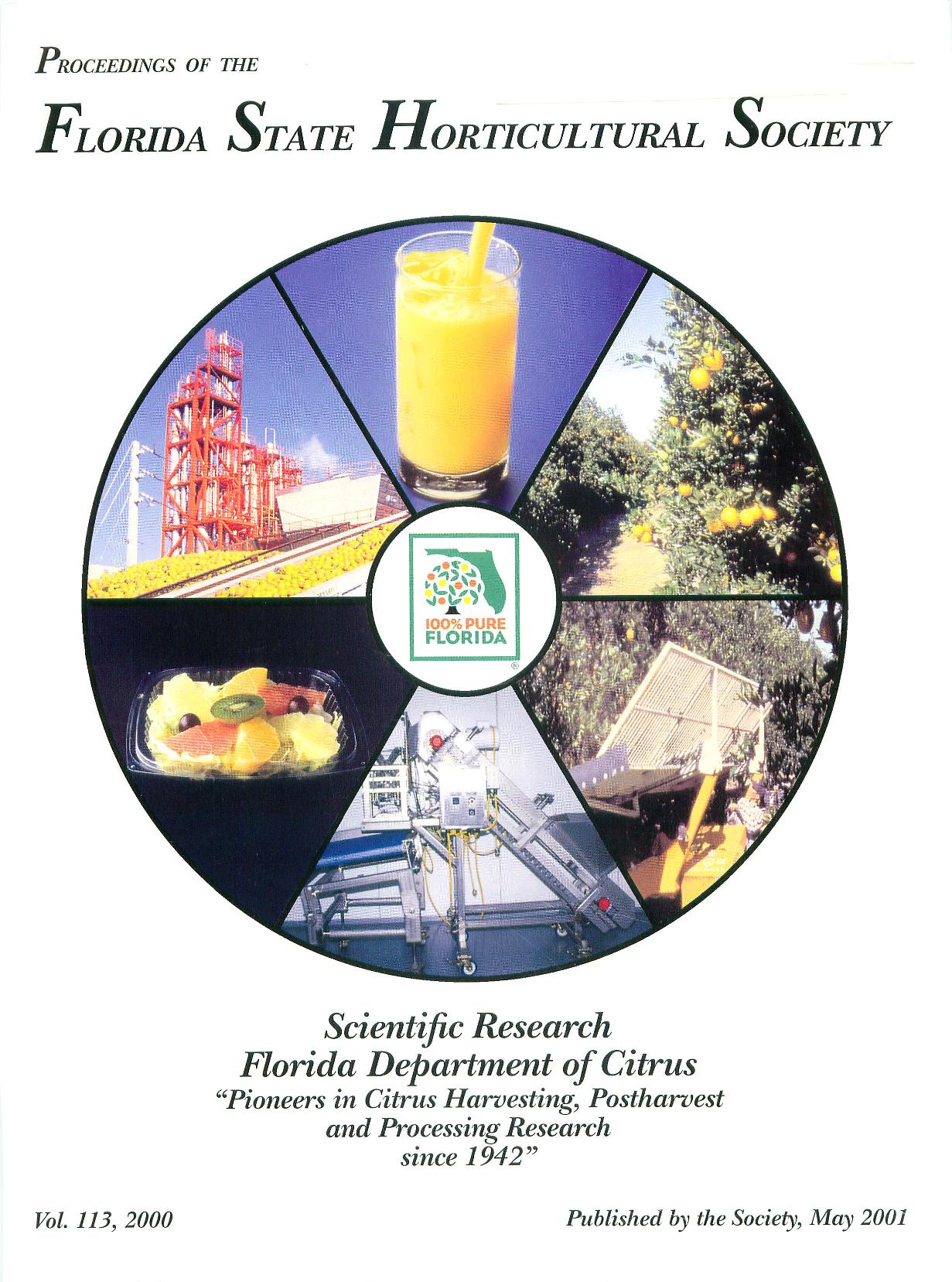Citrus
A pilot study on the spatial distribution of Diaprepes abbreviatus (l.) (Coleoptera: Curculionidae) and Phytophthora spp. In citrus
Abstract
This study describes the spatial distribution of adult Diaprepes abbreviatus and Phytophthora spp. levels in an East coast citrus grove using a Geographic Information Sys tem (GIS). Weevil density and distribution were determined by placing 99 Tedders traps in a grid pattern throughout the 12.5 acre weevil infested grove planted with two rootstocks, Swin gle citrumelo and Cleopatra mandarin. All 1,492 trees and each of the Tedders trap locations were mapped on a digitized, georeferenced, aerial photograph using ArcView 3.1 GIS software. Phytophthora spp. levels were determined from soil samples taken from each tree with a Tedders trap and were similarly mapped. Tree condition was determined twice on 6 Oct. 1999 and 17 May 2000 for all trees by visual assessment, and were mapped and color coded as either healthy, slight, moderate, or severe decline. Topographical views with colored symbols were created using GIS, showing spatially the weevil density, Phytophthora spp. levels, and tree condition relative to tree location, variety, and rootstock. This approach permitted novel observations on the spatial distribution of not only pest andpathogen levels, but also displayed associations with the tree variety, rootstock and tree condition. GIS can be an important tool to elucidate the complex relationships between crop, pest, and pathogen levels, and aid in the improved management of a citrus horticultural system.

